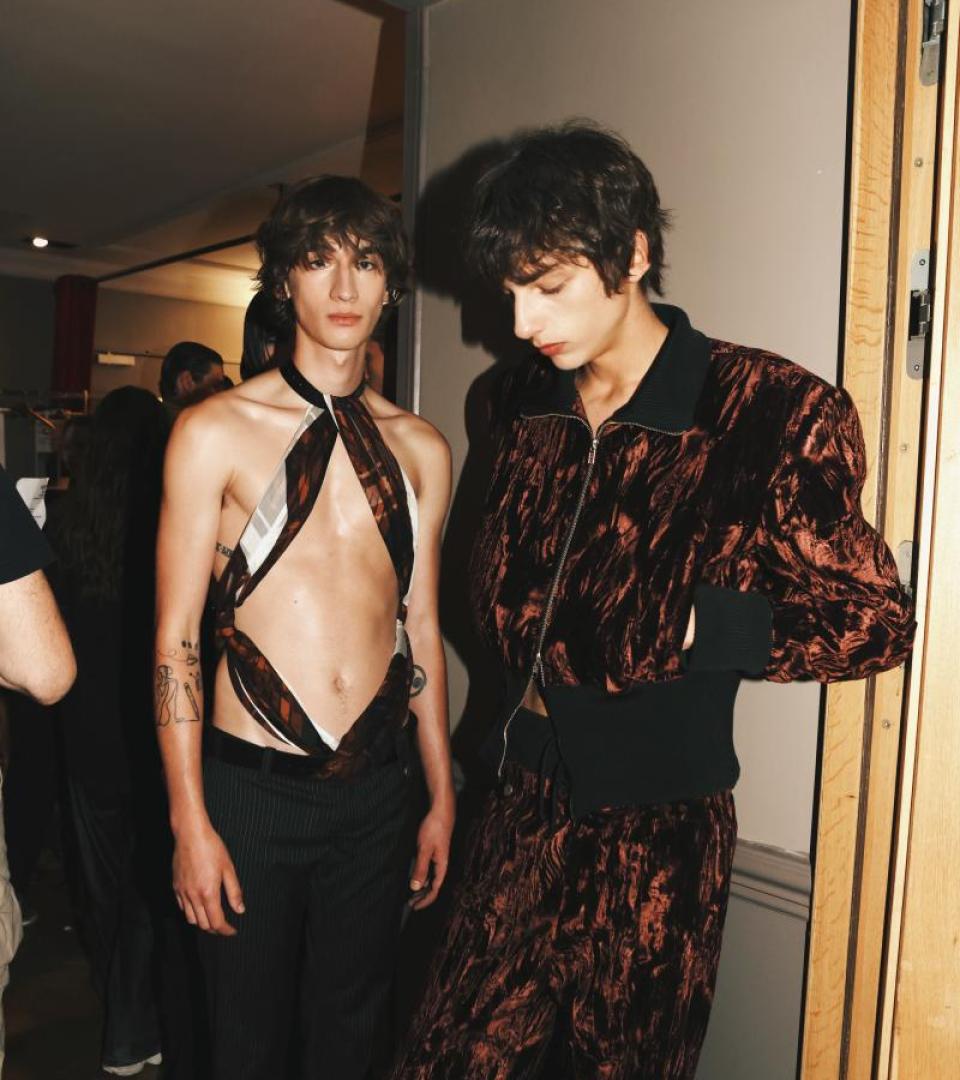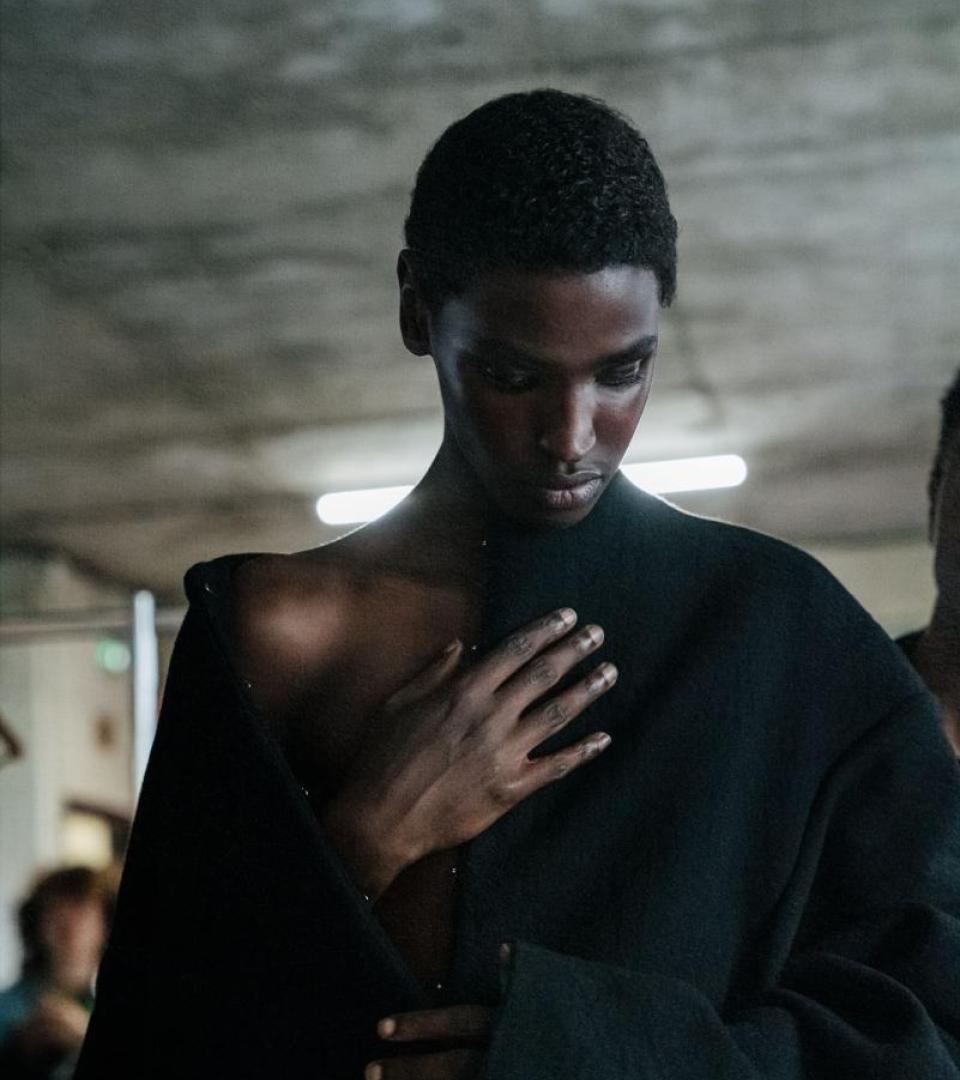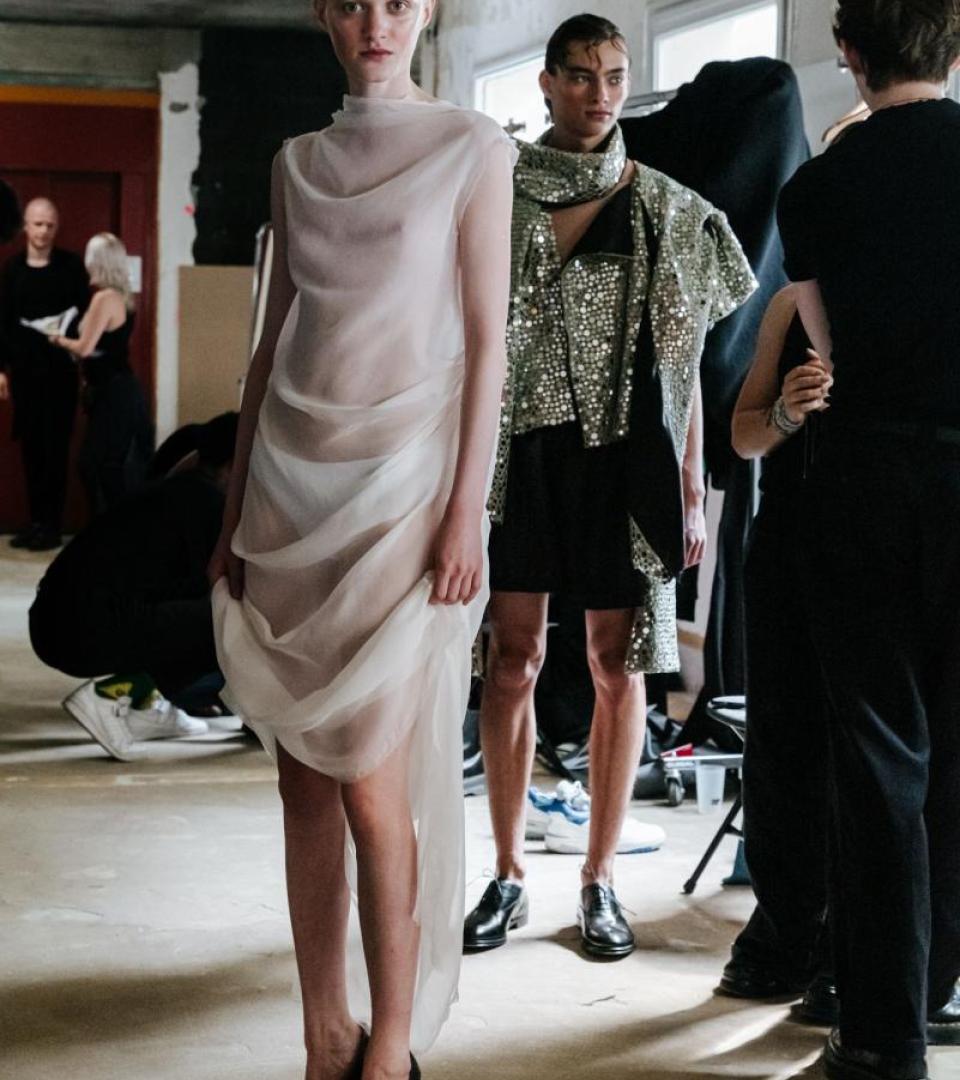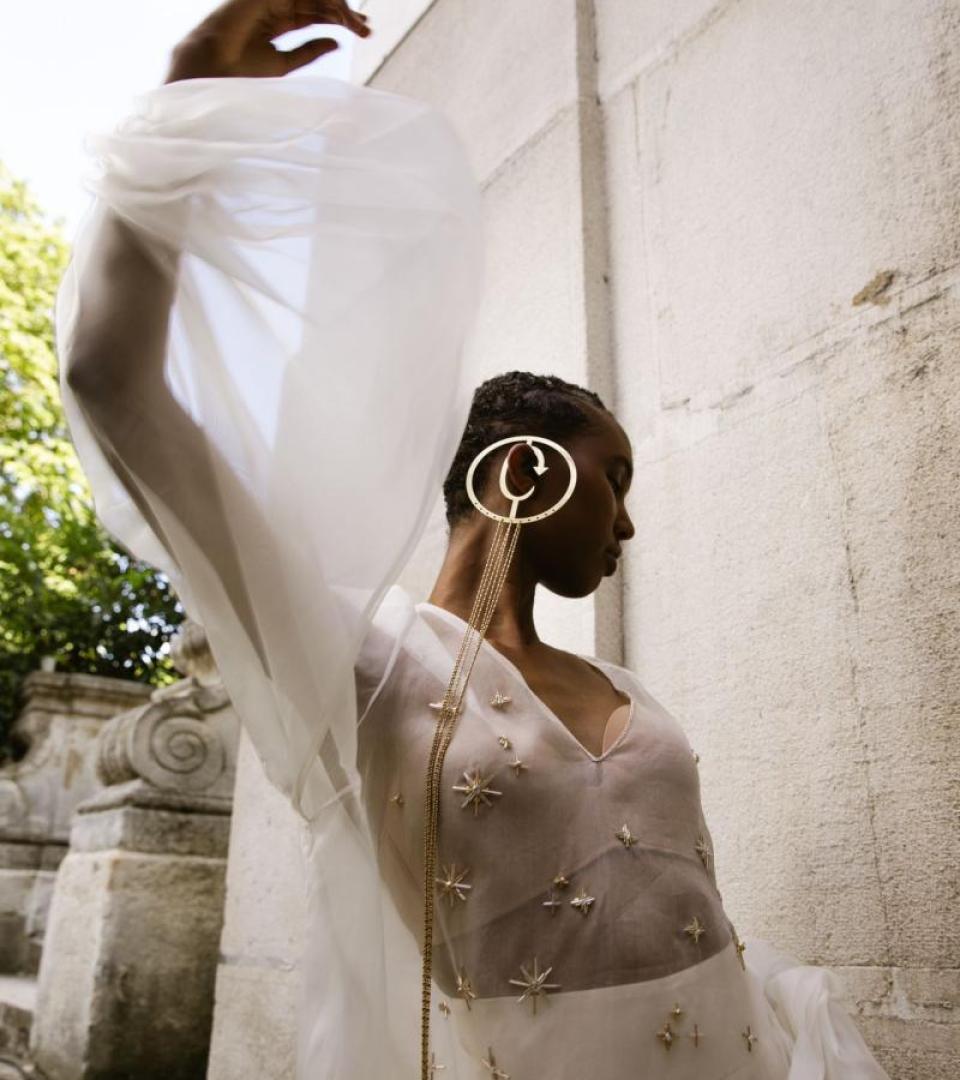Paris Still Holds The Dream
With 23 nationalities represented on the Calendar, Paris Fashion Week® manages to sustain its power of attraction. From major established houses to experimental, avant-garde designers, a wide range of cultures and aesthetics come together in the capital, painting an eclectic scene. Is this a reflection of the times?
CFCL's minimalist knitwear aesthetic has been presented in Paris for several years, and this season, the show will take place on the opening day of Fashion Week. Founded in 2020 by Yusuke Takahashi, who previously worked for Issey Miyake, the brand makes its runway debut with pop-colored knitwear resulting from computer-developed 3D technology using certified, sustainable polyester yarns. A few hours before CFCL, Vaquera hit the catwalk. With its subversive creations combining rave and grunge culture, the New York-based label made the move to Paris Fashion Week® two years ago and is now a fixture on the calendar.
From one aesthetic to another, from one idea of fashion to another, the Paris calendar manages to bring together increasingly eclectic visions, as though refuting the notion of fashion as an example of standardisation. The possibilities are endless, and this is also due to the diversity of cultures. This includes the return of Belgian duo, Ester Manas, known for their body-positive creations, and Swiss label VETEMENTS, which shook up the fashion world in 2015 with its post-Soviet aesthetic.
Fashion Weeks modelled on those held in Paris, Milan, London and New York have been springing up in capitals around the world for several years. Yet Paris remains an essential crossroads. This is the city where the profession of couturier was invented in 1848, and which opened up internationally from 1973 onwards by welcoming Kenzo and Issey Miyake, then six talented designers from Antwerp (Raf Simons and Ann Demeulemeester among others), and the enfants terribles (John Galliano and Alexander McQueen) from London who participated in the revival of the fashion houses bought by LVMH in the 1990s. Today, some of the biggest names on the international scene choose Paris: the Olsen sisters and The Row's subdued luxury, or MiuMiu by Miuccia Prada, named Lyst Index Brand of the Year 2023.
In the collective work “19 regards sur la mode” (Institut Français de la Mode), management science professor David Zajtman explains that few other capitals manage to maintain their status because "few cities are regularly visited by fashion industry professionals." Whether it's major buyers, key media or influential personalities, this ecosystem reassures many young designers.
Supporting young designers
This is notably the case for Spanish designer, Paula Canovas Del Vas, who launched her eponymous brand in 2018 after studying at Central Saint Martins: “I spent 12 years in London, where I studied and founded my brand. This enabled me to develop a strong visual identity, but at a certain point it wasn't enough. I also had to sell. And I've always had showrooms in Paris. I quickly realised that it was by integrating this scene that I would be able to develop and perpetuate the brand," she emphasises. In addition to the support structures for young brands, the designer notes the presence of numerous prizes: ANDAM, the LVMH prize and the D'Hyères festival, all of which provide opportunities for meetings, exchanges and business and creative partnerships for start-up brands.
Having founded her brand in 2020, Meryll Rogge is based in Belgium and presents in Paris every season. "Even if life [costs] in Paris remains high, it's still possible, unlike in other major capitals. This is an important factor for young people to be able to launch their brands, and I find that many manage to emerge in Paris. And this young dynamic infuses the whole system."
Innovation and craftsmanship
Rogge adds that the promotion of craftsmanship is an attractive feature specific to the capital, which is developing several projects to safeguard and promote this work, notably via the 19M. For Canovas Del Vas, craftsmanship is an essential way of thinking about sustainable fashion: “The higher the quality of the garment, the more people will like it and want to wear it for a long time. To develop my shoes, I need 8 craftspeople. It's a lot of time and work, but it's essential. My priorities are quality and comfort. I dedicate a lot of my energy to this,” she explains.
Indeed, the Parisian scene is abuzz with artisanal proposals, whether it's the long opaline dresses meticulously handcrafted by Róisín Pierce in her studio in Ireland, or the knitwear adorned with traditional embroidery by Maxhosa By Laduma, founded by Laduma Ngxokolo from South Africa.
Cultural emulation
But Paris is also a global myth, nurtured by a palimpsest of representations – from the writings of Baudelaire to the films of the New Wave – and most recently the Emily In Paris series. This, in turn, feeds the imagination. “I have a deep love for this city, which has been my dream destination since I was very young. I love French films, like those by Gaspar Noé, and I'm fascinated by Paris's rich history, associated with romance, poetry, art, music and, of course, fashion. Presenting my work in Paris is therefore of considerable importance to me,” explains Chinese designer Di Di, who founded her eponymous brand in 2018 in China before moving to Paris, where she feels “surrounded by talented people.” Paula Canovas Del Vas also enjoys meeting artists from diverse artistic and craft worlds, like her friend the cook Zelikha Dinga, who leads the highly creative catering company Caro Diario, often present during Paris Fashion Week® dinners and events.
An economic and cultural crossroads, Paris always manages to seduce. It remains to be seen what inspirations the ecosystem will arouse this season.
Manon Renault



